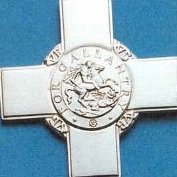Dairy Farms in LOS?
-
Recently Browsing 0 members
- No registered users viewing this page.
-
Topics
-
-
Popular Contributors
-
-
Latest posts...
-
159
Travel Chiang Mai Crowned Asia's Best City, Bangkok Shines in Third
Walkabout Wayne rates Lamphun no 1. See his vids -
27
Crime Brawl Erupts Among Middle Eastern Tourists in Pattaya’s Soi Yensabai
But they can easily get different passports to come in again and again. We have some in the UK who have been imprisoned and then come back on a different passport; twice! some of these guys are professional criminals not just spoilt brats. -
27
Wise confirmation of personal details
some wise facilities will not be available to you, transfers are fine -
41
THAILAND LIVE Thailand Live Thursday 17 July 2025
Transgender Hairdresser Faces HIV Prejudice from Client's Mother Photo via Facebook/ เอมมี่ พิมพ์รภาดา In a disheartening incident highlighting ongoing prejudices, transgender hairdresser Watchara “Emmy” U-phat shared her experience of being unfoundedly accused of potentially spreading HIV by a client and her mother. Despite Emmy being HIV negative, the accusations stemmed from stereotypes about transgender individuals. Full Story: https://aseannow.com/topic/1367011-transgender-hairdresser-faces-hiv-prejudice-from-clients-mother/ -
0
Report Transgender Hairdresser Faces HIV Prejudice from Client's Mother
Photo via Facebook/ เอมมี่ พิมพ์รภาดา In a disheartening incident highlighting ongoing prejudices, transgender hairdresser Watchara “Emmy” U-phat shared her experience of being unfoundedly accused of potentially spreading HIV by a client and her mother. Despite Emmy being HIV negative, the accusations stemmed from stereotypes about transgender individuals. On 13 July, Emmy, 35, posted her story on Facebook. She included a photo of her recent HIV test from the Korat Medical Laboratory, which clearly confirmed her negative status. Emmy recounted that while cutting a client's hair, she noticed a noticeable pimple on the woman’s forehead. The client, satisfied with her haircut, even took a selfie before leaving. However, the peace was short-lived as Emmy soon received a call from the client’s mother, who identified herself as a doctor. The mother expressed concern over the client's burst pimple, fearing potential HIV transmission. During the call, Emmy reassured her, explaining that she had recently undergone health checks, and was in a long-term monogamous relationship. Offering additional reassurance, Emmy voluntarily shared her test results via the LINE app, reiterating her HIV-negative status. The mother’s inquiries persisted, probing Emmy about her private life, to which Emmy responded with patience but firmness. Emmy expressed in her Facebook post that this paranoia seemed rooted in her being a transwoman, urging the public to avoid basing their judgments on gender identity alone. Despite evidence clearing any doubts, the client continued to inundate Emmy with intrusive questions, even asking if she took daily anti-HIV medication. Exhausted, Emmy advised the client to trust the factual results and not to harbour prejudice against transgender individuals, as such assumptions are offensive and hurtful. The client later apologised to Emmy, explaining her anxiety stemmed from studying pharmacy and knowing someone living with HIV. Emmy’s social media post garnered significant attention, with many criticising the mother and daughter for their lack of understanding, especially given their medical background. In response, Emmy emphasised she was not angry but aimed to raise awareness about the issue. Her experience has sparked discussions on the need for education and empathy towards transgender individuals and those living with HIV. Adapted by ASEAN Now from The Thaiger 2025-07-17- 1
-

-
159
Travel Chiang Mai Crowned Asia's Best City, Bangkok Shines in Third
Went 2x. Dump imo No offence
-
-
Popular in The Pub





.thumb.jpeg.d2d19a66404642fd9ff62d6262fd153e.jpeg)







Recommended Posts
Create an account or sign in to comment
You need to be a member in order to leave a comment
Create an account
Sign up for a new account in our community. It's easy!
Register a new accountSign in
Already have an account? Sign in here.
Sign In Now